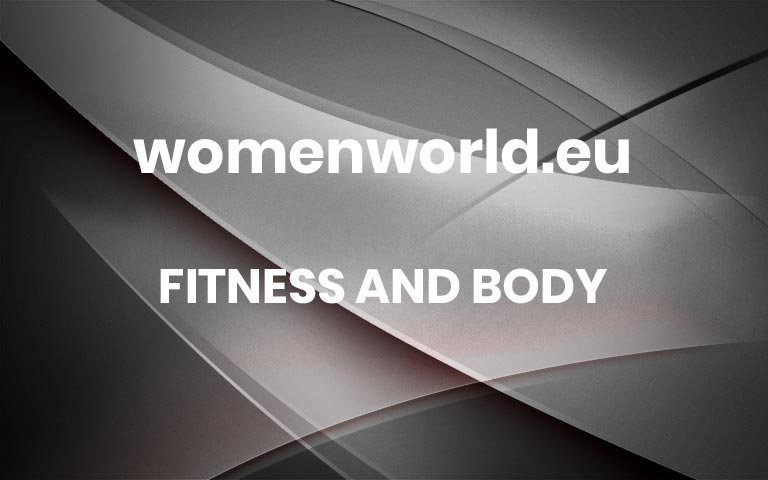Trainers Discuss TikTok’s 3-2-1 Method & If It Works
Finding a good workout split can be really daunting: Are you doing enough cardio? Torching enough calories? What about building strength? But what if it’s not fun? Thankfully, TikTok has introduced the 3-2-1 method. It’s a weekly workout split that “promotes variety and helps prevent overtraining in any one area,” says trainer and founder of Gutsy, Juli Kleinhans. It’s all over social media as a magic fix. But really, it’s just a smart approach to structure your week, says Kleinhans. Here’s how to get the most from the 3-2-1 method – and when to opt for a different approach.Meet The Experts: Carly Swartz is a health and fitness coach and a finalist of the 2024 Women’s Health Cover Search. Juli Kleinhans is a health and fitness coach, founder of Gutsy app and a finalist of the 2024 Women’s Health Cover Search.What Is The 3-2-1 Method?At the most basic level, the 3-2-1 method is a weekly workout split that structures your fitness regimen in three categories. Three days a week are dedicated to one modality, two to another and one to a third.In some TikTok videos, you’ll see the split as three days of strength training, two days of Pilates (or “lower-impact or restorative movement,” says Kleinhans) and one day of cardio. For other videos, the method is broken down as three days of strength training, two days of cardio and one day of Pilates. For others, one day is a rest day. What’s a girl to choose? “You should choose a workout split that fits your schedule and aligns with your fitness goals,” suggests Carly Swartz, a health and fitness coach.READ MORE: Winter Workout Tips On How To Stay Safe And Warm, According To TrainersWhat Is The 3-2-1 Method Good For?What’s great about breaking down your weekly workouts like this is that you’re able to mix things up. In fact, trainers use the method themselves. “It’s quite similar to my own training approach. I typically train five to six times a week. And this method allows me to target both the big and small muscle groups while also improving my stamina,” says Swartz. “ It offers structure while still allowing for variety, which keeps training interesting and helps individuals stay motivated to train consistently.” Who it’s specifically great for:BeginnersFrom this standpoint, Kleinhans sees the 3-2-1 method split as beneficial for beginners. “Beginners thrive with structure, and this method gives them variety without decision fatigue,” she explains. However, given that the regimen asks for six days of work, it may be overwhelming when you’re starting out. “The key is to keep expectations realistic and scale appropriately. Rest is productive, and form always comes first,” says Kleinhans. How she’d structure it? “A beginner version might look like two strength-based movement days, one Pilates-inspired session, and two active recovery walks. That’s still powerful. You could also swap the Pilates session for a stretch, flow, or mobility session to gently build up body awareness and control,” she points out.Anyone building strengthYou may have noticed that the 3-2-1 method focuses heavily on strength training. Pilates, which is also a muscle-building modality, means that a large chunk of your week is spent toning up. That’s not a bad thing, say experts. “Pilates brings a deep focus to core stability, alignment, and mobility – things that sometimes get overlooked in traditional strength programs,” explains Kleinhans. Per Swartz, it’s great for addressing back pain and poor posture as well as creating greater body awareness – something crucial for weightlifting.That said, Kleinhans cautions Pilates may not be the exact fit for growing muscles. “A woman chasing glute growth, for example, may benefit from 3 strength days instead,” she says.READ MORE: 4 Moves That’ll Help You Build Seriously Strong LegsSomeone avoiding burnoutSince you’ve got three options to choose from, you can switch things up as you’d like, so no muscle is overtrained. “I’d space out the strength days- Monday, Wednesday, and Friday – to give the body time to recover and adapt,” says Kleinhans. “Then, I’d slot Pilates on Tuesday and Thursday as low-impact movement days, and leave cardio for the weekend, when things are often more relaxed. It’s not about perfection, it’s about creating a rhythm that’s sustainable.”Whoever wants consistencyIf you’re looking for a plan that helps you build on a routine that you can stick to, this might be for you. “It’s a great starting point; it provides structure, variety, and the motivation to keep moving,” explains Swartz. Plus, she adds, if you’re not sure which modality you prefer, this can help explore different training types.A woman who values balanced trainingA well-rounded fitness routine (read: the kind that means you’ll nail Hyrox or open a jam jar all alone) means doing a variety of workout routines. “The mix of modalities allows the body to move in different ways, build strength, improve mobility, and support recovery,” says Kleinhans. “It touches on all the pillars of fitness without leaning too heavily in one direction, which is often where burnout or imbalance can creep in.”Is The 3-2-1 Method Good For Weight Loss?For Swartz, the method could be used for weight loss if it’s rejigged slightly. “If your goal is weight loss, you can incorporate more cardio into your routine without cutting out strength training,” she says. If you’re committed to strength training (good for you!), try adding cardio to the workout, either at the end or combining the two into the workout. For Kleinhans, the real magic in the 3-2-1 method lies in sticking to it. “What matters most is consistency, progressive overload, quality nutrition, and recovery. The 3-2-1 method can create the space for those things to happen if the workouts are intentional and well-programmed,” she says. “It’s not a magic pill or quick fix, it’s simply a way to structure your workouts. The results come from how you show up inside that structure.” READ MORE: The 4 Best Exercises To Do For PerimenopauseHow To Choose The Right Split For You“Everyone is different; what works for one person may not work for another. The key is to create a workout split that you can stay consistent with,” says Swartz. To ease into it – especially if you usually train less than six days a week – swap things for others, depending on how you feel, say Swartz and Kleinhans. You could have two active rest days instead of one, or sub a Pilates session for stretches if you’re stiff.“If someone’s just starting out, I’d recommend easing in with two strength days and one Pilates or active recovery day, to build consistency without burnout. From there, they can gradually increase volume,” says Kleinhans.For Swartz, whose schedule mirrors the method, her structure involves two strength days, a cardio session, a Pilates day, and then another strength session. “On the remaining day, I decide whether to focus on either cardio or Pilates, depending on how I’m feeling,” she says.Who Should Give This A Skip?Like a Met Gala fit, the 3-2-1 method isn’t for everybody. Athletes training for specific goals (marathoners, triathletes or powerlifters, for example), might not find this useful. And, if you’re so busy you can barely fit in a daily walk, let alone six days of workouts, this might be overwhelming. However, says Swartz, there are elements that anyone should try to emulate. “For example, triathletes and marathon runners will naturally focus more on cardio, but it’s still important for them to include strength training days to support performance and prevent injury,” she says. Similarly, if you can’t do six days of workouts, try for as many as you can get to that week. “Not everyone has the capacity to train six days a week, and that’s okay,” says Kleinhans. “Fitness should be supportive, not stressful.”READ MORE: The Ultimate No-Gym Required Workout More



